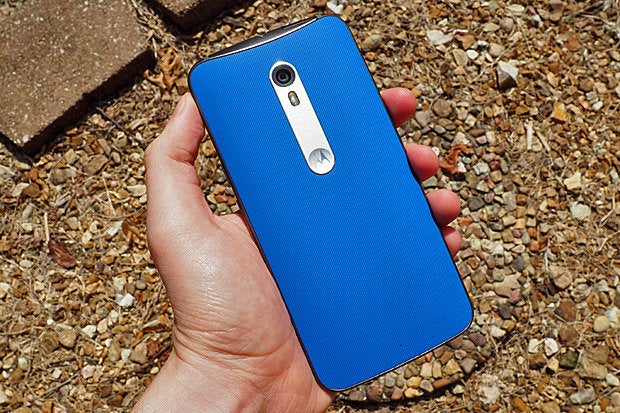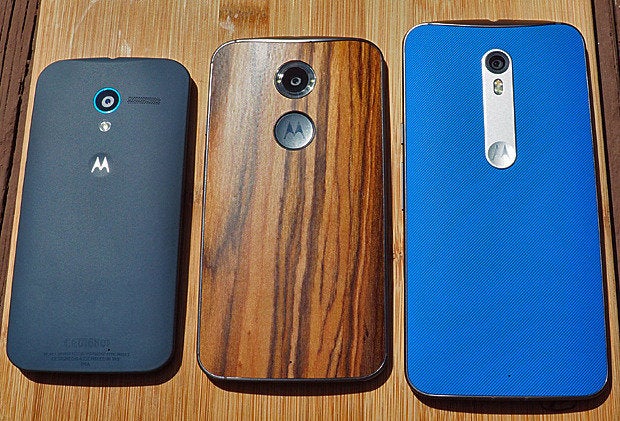2015 Evo X Final Edition Specs
![]()
By , Contributing Editor, Computerworld |
About |
Not your average Android news — a diverse mix of advice, insight, and analysis with veteran Android journalist JR Raphael.
Hands on: Getting to know the Moto X Pure Edition
Forget the specs: It's time to see what this heavily anticipated sequel is really all about.

Oh -- hello there, Moto.
On my desk sits the brand new Moto X Pure Edition (also known as the "Moto X Style" in some parts of the world). It's the much anticipated follow-up to last year's 2014 Moto X -- a phone that delivered an exceptional overall user experience even with its decidedly average camera and stamina.
This year's model picks up where that phone left off and promises to make things bigger (quite literally) and better (all around). And with a new carrier-free sales model and a starting price of just $400 unlocked, it has the potential to seriously shake up the smartphone market.
The real question, of course, is what the new Moto X is actually like to use. I'll be living with the phone for the next several days in order to formulate some meaningful real-world impressions -- but in the meantime, here are the first things I've noticed as I've started to move into the device:
It's big. Like, seriously this time.
Yeah, yeah -- I know: We said the same thing last year when comparing the 2014 Moto X to the previous year's first-gen model. But while last year's version took the phone from being "compact" to being "standard-sized," this year's device moves the Moto X firmly into plus-sized terrain.

From left to right: The first-gen Moto X, the 2014 Moto X (in wood), and the Moto X Pure Edition
Is that a good change or a bad one? Well, it really just depends on your perspective and what type of phone you prefer. I haven't been using the device long enough to reach any firm conclusions of my own yet, but what I can tell you for now is that the new Moto X is basically the same size as Samsung's Galaxy Note 5. And if you read my review of that device, you know that I was pleasantly surprised at how manageable it ended up being.

The Moto X Pure Edition alongside the Galaxy Note 5
Its design is familiar -- with a few new twists.
If you've seen the 2014 Moto X, the new Moto X Pure Edition will look immediately familiar. Size aside, the device follows the same basic blueprint as the previous model -- the curved shape, the metal frame, and the choice of various plastic, leather, and real-wood backs.
When you look closely, though, you do notice some evolution in the phone's design. The most prominent change is a new metallic strip connecting the camera lens to the trademark Motorola "dimple" on the device's back. Both the lens and the dimple are smaller than they were on the 2014 device, though the strip itself -- which is available in a choice of seven different colors via Motorola's Moto Maker customization tool -- is a much more striking and prominent visual feature.

The materials on the back are also a bit different this go-round: The "soft grip" plastic has a new diagonal-stripe texture and a very different feel from the "soft touch" plastic of yore. The leather features a different finish, too ("Saffiano," if that means anything to anyone). The wood options appear to be mostly the same, with a choice of Bamboo, Walnut, Ebony, or Charcoal Ash finishes.
It has the same strengths as the 2014 Moto X -- with some promising new enhancements.
Motorola's "stock-plus" approach to software is what truly sets its phones apart from the pack, and that same setup is present here -- the clean and clutter-free Android Lollipop (5.1.1) user interface created by Google, with no arbitrary visual modifications and only Motorola's excellent and unobtrusive custom features added into the mix.
[UPDATE:The Moto X Pure Edition features a nifty new gesture command, too.]
Along with carrying over that pro, Moto is attempting to address some of the cons present in its previous model. You've probably heard plenty about the two most significant under-the-hood changes: a better camera ("one of the best in the industry," according to Motorola) and better stamina. It'll take some time before I'm able to say much about either change and just how significant it really is, but those are definitely areas I'll be looking at closely as I carry the phone over the coming days.
[UPDATE: Some side-by-side comparisons of the cameras on the 2014 Moto X and the new Pure Edition.]
The new Moto X has a handful of other enhancements over last year's model, including a new SD card slot for external storage expansion, the addition of dual front-facing speakers, and a refined Quick Charge system that's supposedly faster than ever (with a charger that's included this time, too).
We're just getting started.
Make no mistake about it: This is all just surface-level stuff -- first impressions. The full review is still to come.
The true test is how the Moto X Pure Edition shines or falls short in regular life -- carrying it around and doing things like surfing the Web on the go, streaming music at the gym, and taking way too many photos of my daughter (often in the poorly lit environments known as the real world). I've said it before and I'll say it again: Seeing how a phone holds up through multiple days of mundane use will always tell you more than any benchmarks or lab tests can reveal.
So stick around, gang. From detailed device-to-device comparisons to the full real-world review, there's much more on the way.
UPDATES:
- Moto X Pure Edition review: A clever phone with a killer price
- Moto X Pure Edition vs. 2014 Moto X: Worth the upgrade?
- Galaxy Note 5 vs. Moto X Pure Edition: A head-to-head camera comparison

Contributing Editor JR Raphael serves up tasty morsels about the human side of technology. Hungry for more? Join him on Twitter or sign up for his weekly newsletter to get fresh tips and insight in your inbox every Friday.
Copyright © 2015 IDG Communications, Inc.
2015 Evo X Final Edition Specs
Source: https://www.computerworld.com/article/2982875/moto-x-pure-edition.html







Tidak ada komentar:
Posting Komentar